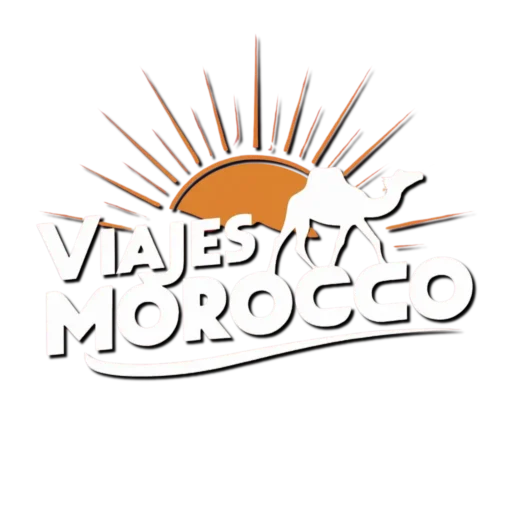Top 21 Traditional Moroccan Dishes
Delicious Traditional Moroccan Dishes
When you come to Morocco you should have to try different types of best Moroccan food because of the Traditional Moroccan Dishes are very tasty and worth the experience, in this topic we offer you the most famous Moroccan dishes which we recommend you try when you come to Morocco.
1- Tagine
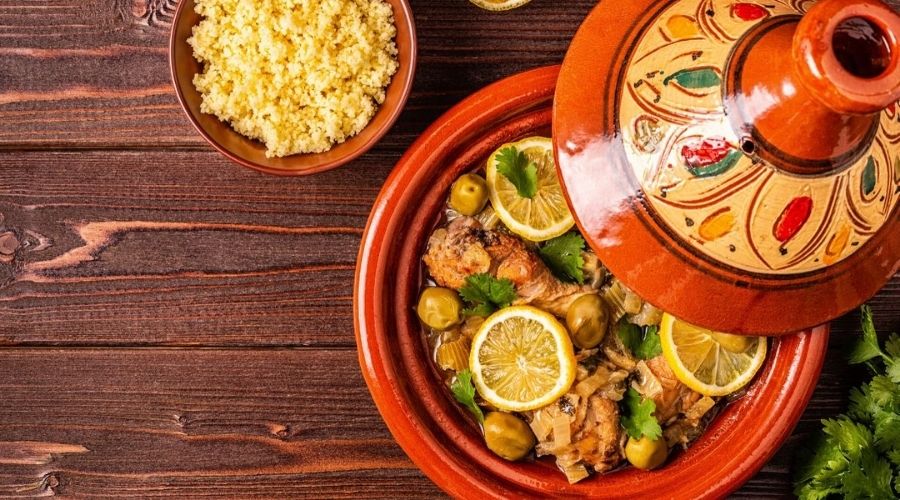
The most famous food in Morocco. It’s a clay cooking pot with a conical lid, it’s made by throwing vegetables, spices, and multiple types of dishes slow-cooked inside(beef, chicken, lamb, veggies,…etc). You can get it practically anywhere, at roadside stops, cafés, and nicer restaurants.
2 - Couscous
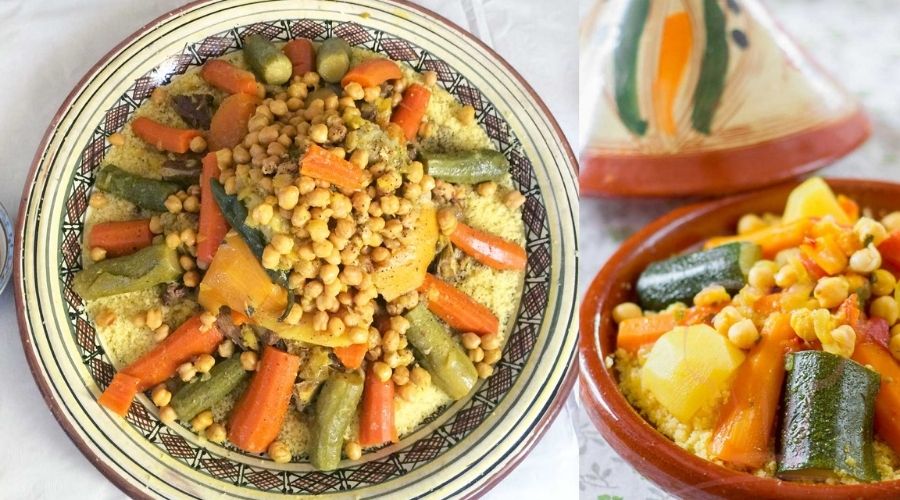
Another popular Moroccan food which is an amalgamation of meat, vegetables, and steamed couscous grains. Even though this dish is simple, it offers robust flavors through many different combinations.
3 - Harira
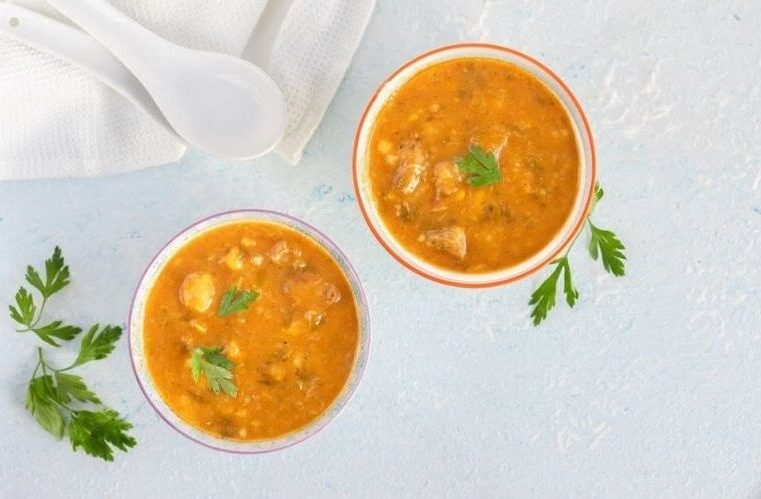
One of the famous Moroccan dishes, Moroccan soup is tomato-based and served with chicken and lentils. Rice or thin noodles are added into a beef or lamb broth, before putting it all together making a delicious and filling meal. This soup is traditionally served as a starter or used during the month of Ramadan to break the fast at dusk.
4 - Bastilla
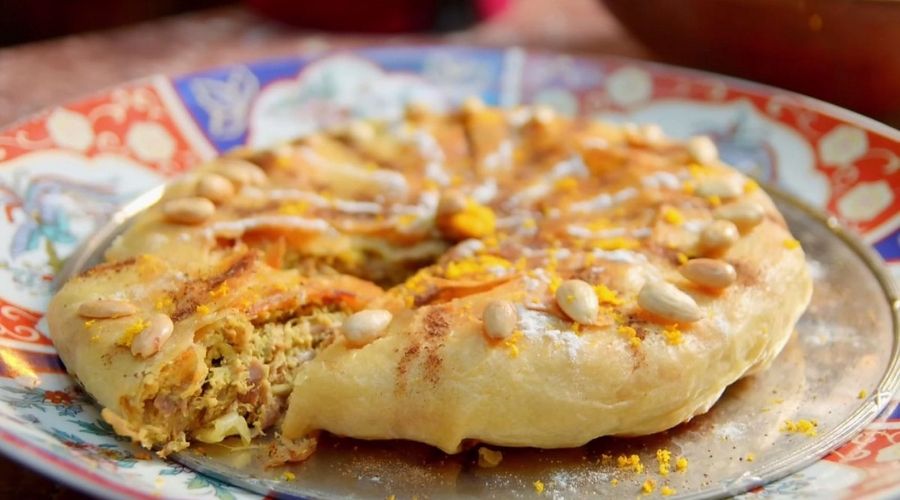
The Bastilla is a symbol of the ancient Fassi (Fes) cuisine, and is often served on occasions. It consists of leafy flour dough stuffed with chicken meat with eggs, almonds, and spices, sometimes filled with fish. When serving, pastilla is sprinkled with sugar and cinnamon.
5 - Tanjia
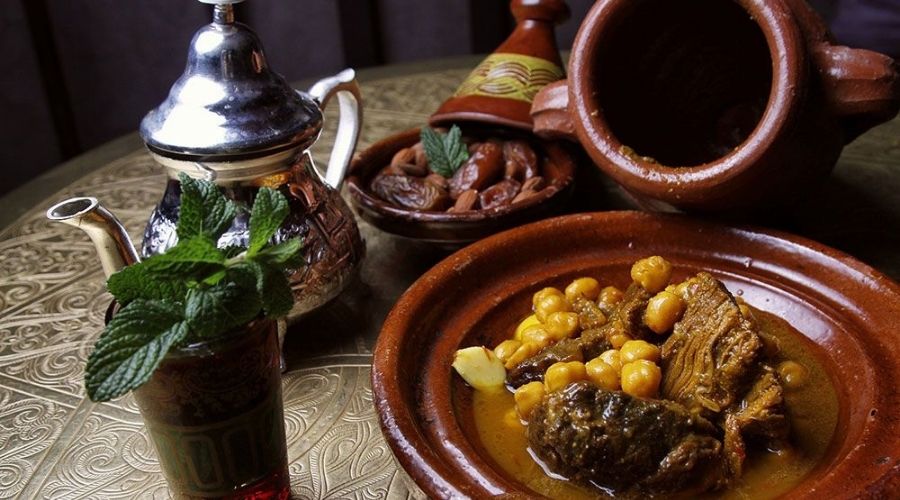
Tanjia is a Marrakech dish par excellence. It is prepared from meat, garlic, cumin, saffron, and lemon, and it is cooked in a special pot made of pottery (similar to its shape) in traditional ovens. Hot served to guests.
6 - Rfissa
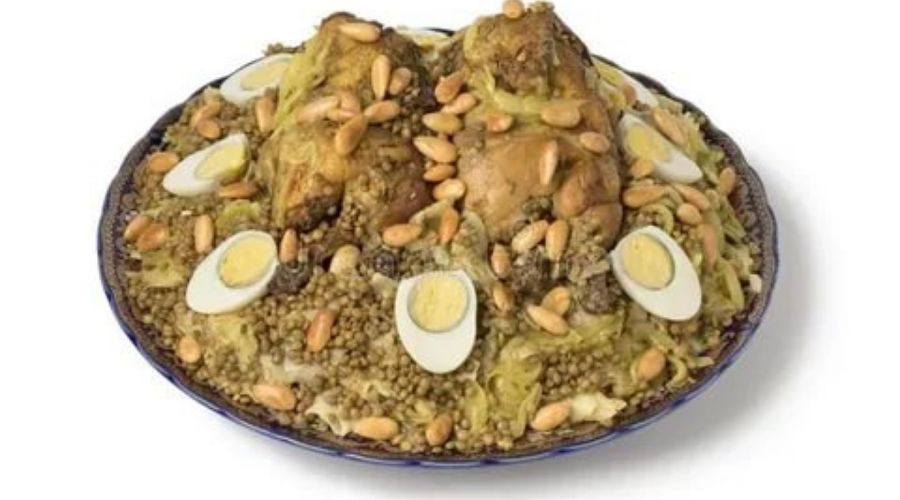
Is the best popular Moroccan dishes, slowly cooked chicken with lentils marinated in high temperatures is filled with fenugreek, saffron, and cumin on a bed of bread before putting it on the main course. This meal is famous for being served to new mothers in Morocco, but you can order and enjoy it at any time
7- Bissara
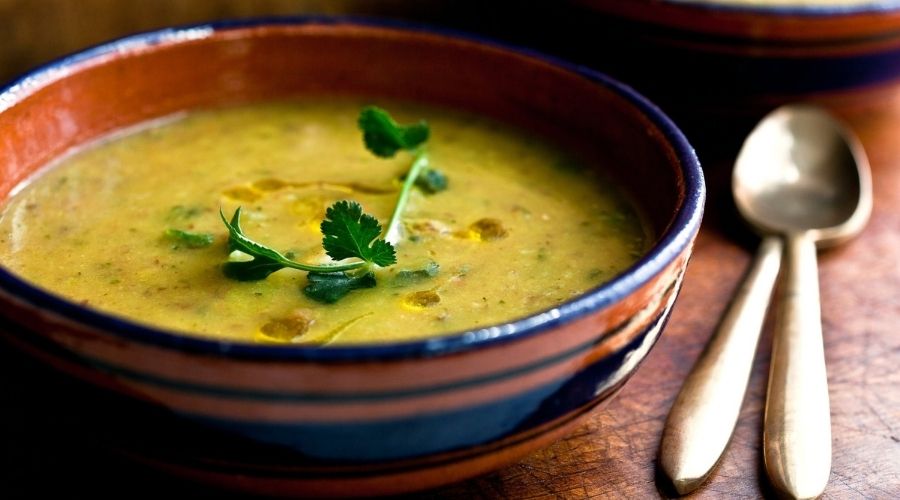
It is a popular delicacy in the northern and eastern regions of Morocco and it is mainly served from beans or galbanas. It is required in this meal that you mix with olive oil with the addition of some breezes …
8- Zaalouk
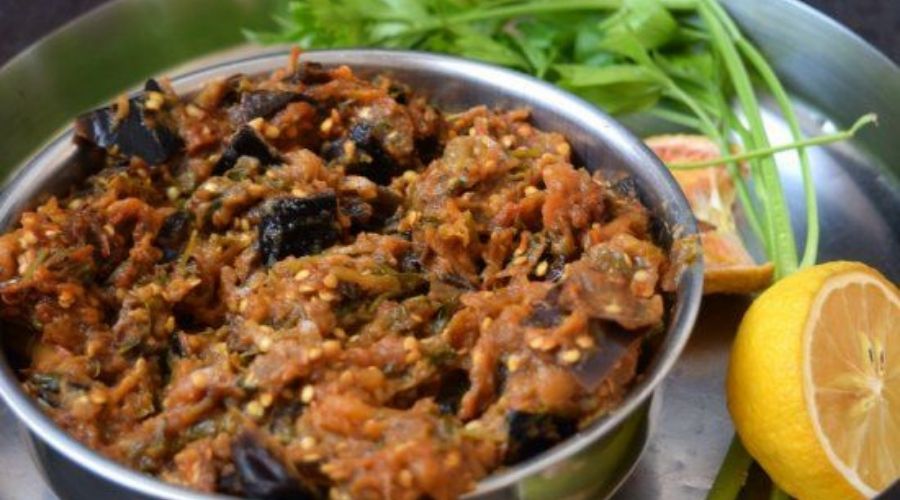
Zaalouk is one of the most famous Moroccan dishes. It is a salad of grilled or fried eggplant with tomato sauce, roasted pepper, garlic, and wonderful Moroccan spices. It is eaten cold with Moroccan bread and served either before or with the main dishes.
9- Seffa
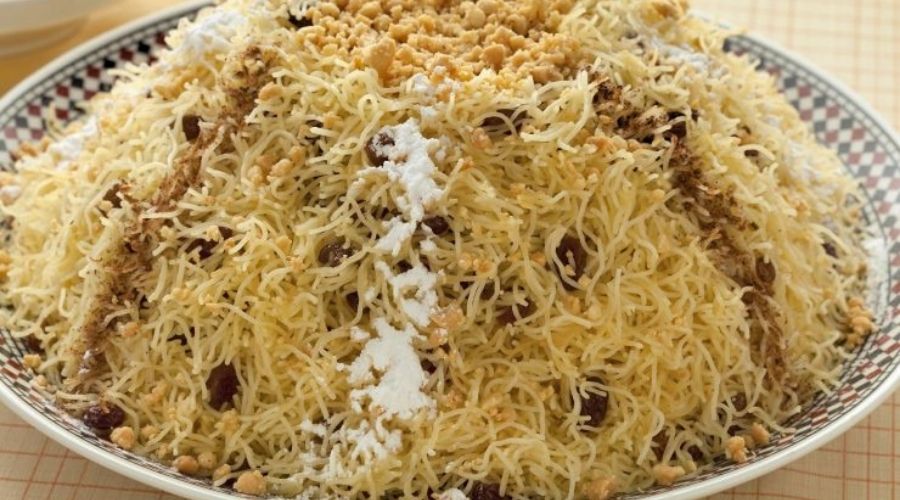
Seffa is a Moroccan specialty that is generally served on special occasions between the main dish and dessert … Seffa recipe.
10- The Mechoui
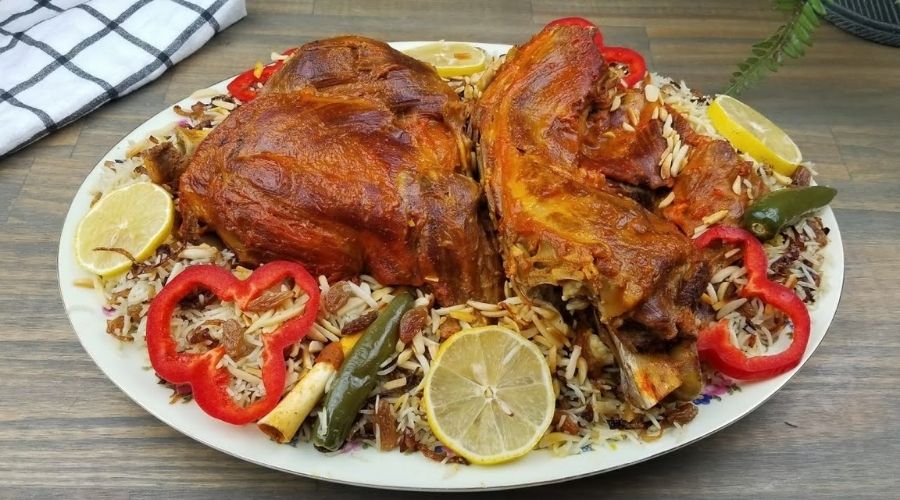
Is traditional food in Morocco. A lamb barbecue served on the occasion of a wedding in Morocco A meat-based dish, barbecue is more of a cooking method than a particular recipe.
11- Kaab El Ghazal
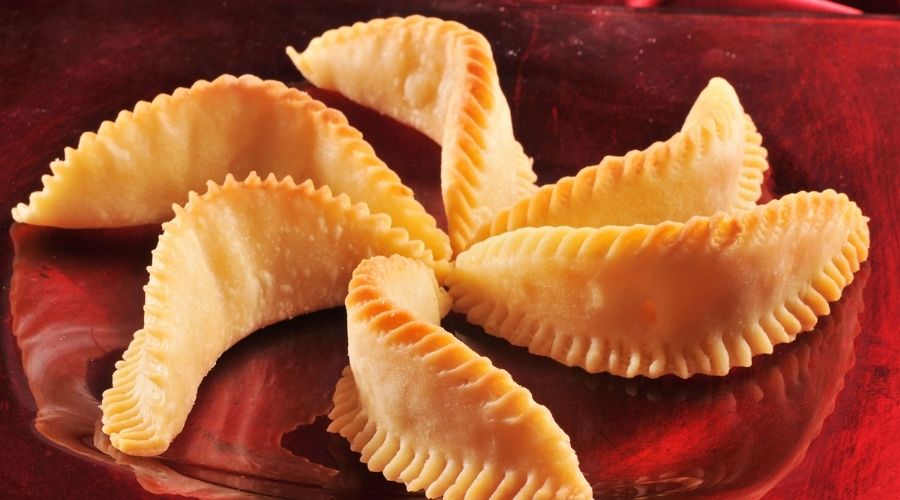
Moroccan cuisine is also the pastries that crown the meal. Delicious gazelle horns, prepared with almonds coated with shortbread with orange blossom. Delicious with a good mint tea.
12- Ghriba
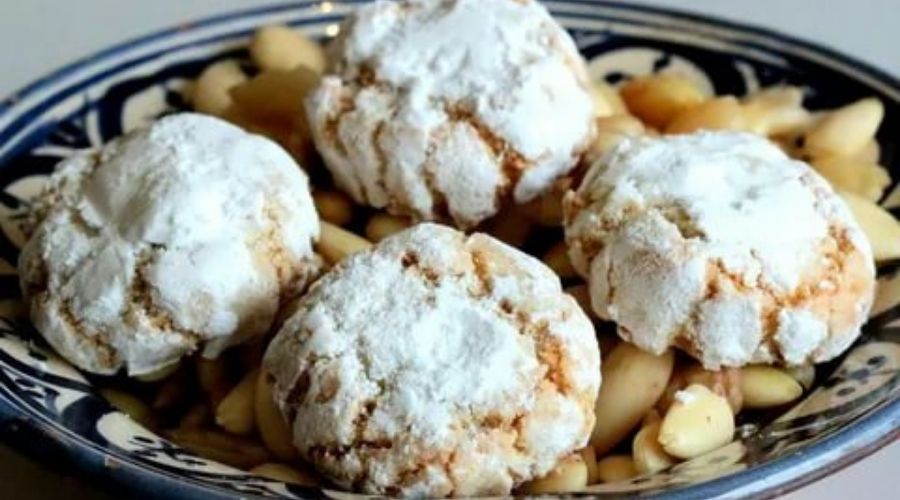
Ghriba one of the tasty Moroccan dishes is a pastry inspired by an Andalusian specialty prepared with pork fat. It is replaced in Morocco by vegetable oil; We serve this cupcake for special occasions, like an engagement party or even a wedding.
13- La Mrouzia
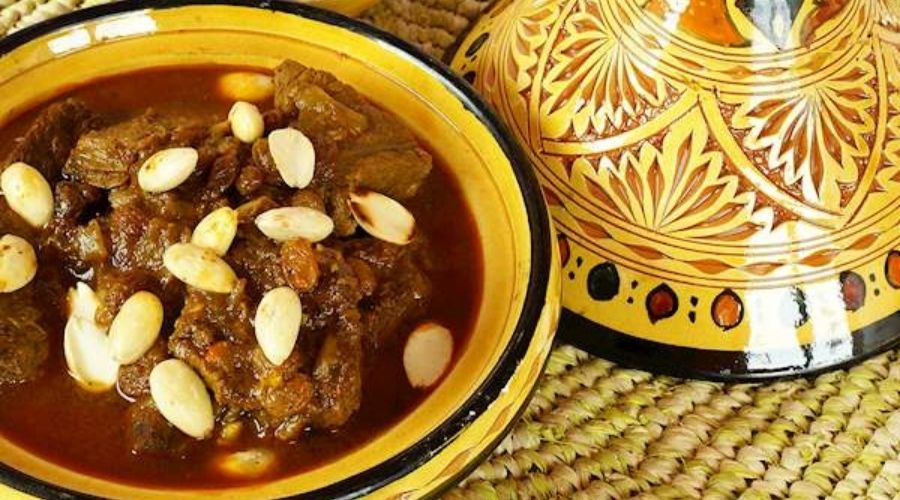
This is a very special recipe for Moroccan tagine, traditionally served during the festival of Eid el-Kebir and prepared with lamb neck, almonds, raisins, honey and cinnamon, the whole being subtly balanced by the blend of Ras-El-Hanout. The dish is prepared days before the party, the meat having to cook for long hours, to come off effortlessly. In the traditional recipe, kidney fat was added to form a protective film, which kept the dish at a time when there was no refrigerator.
14- Briouate
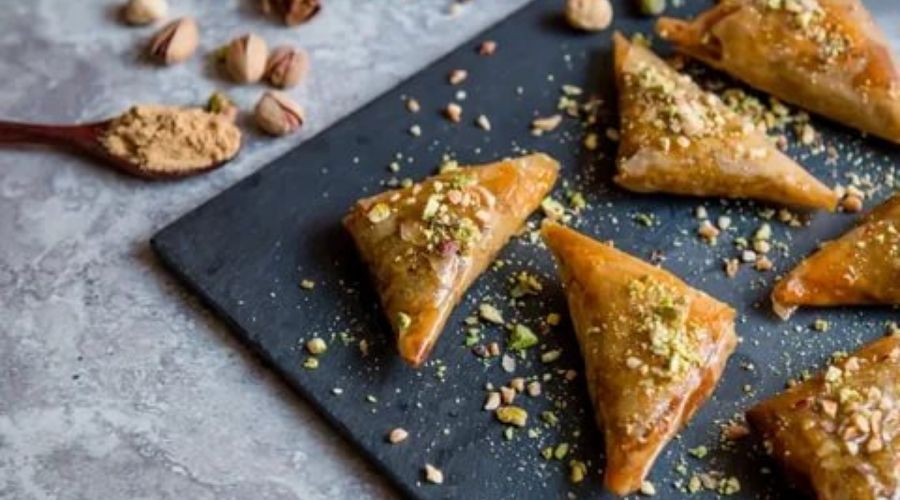
Briouate, or briwate, is a flaky triangle that can be both sweet and savory. Originally from Fez, its most common version consists of almonds, sugar, orange blossom water, and cinnamon, all wrapped in a sheet of Moroccan Bastilla. Briouates with seafood are also very popular. There are other recipes where the triangles are stuffed with minced meat, chicken, cheese, or vegetables.
15- Salads
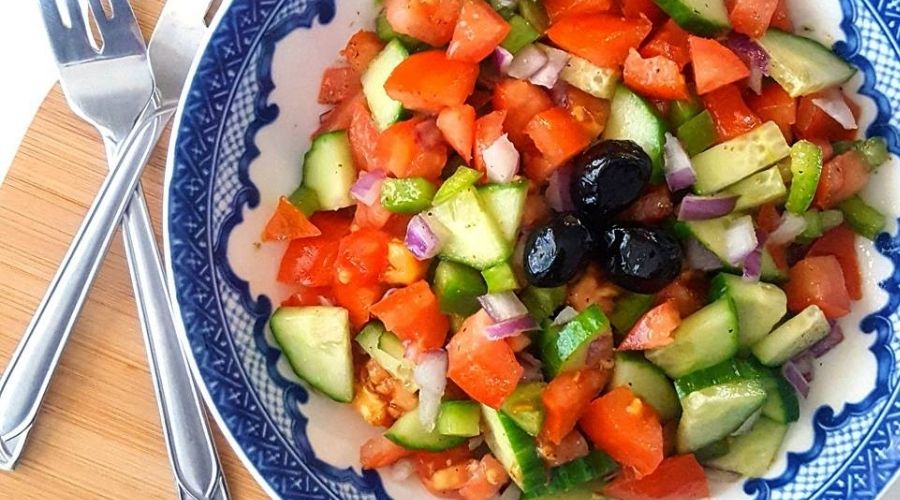
During a traditional Moroccan meal, many salads are served before or during the dish, hot or cold. Whether simple or complex, all bring a touch of freshness and allow Moroccans to eat a lot of vegetables. Cucumber tomatoes, cumin carrots, eggplant zaalouk, zucchini with hazelnuts, celery mushrooms, orange lentils … once again, the variations are endless!
16- Chebakia
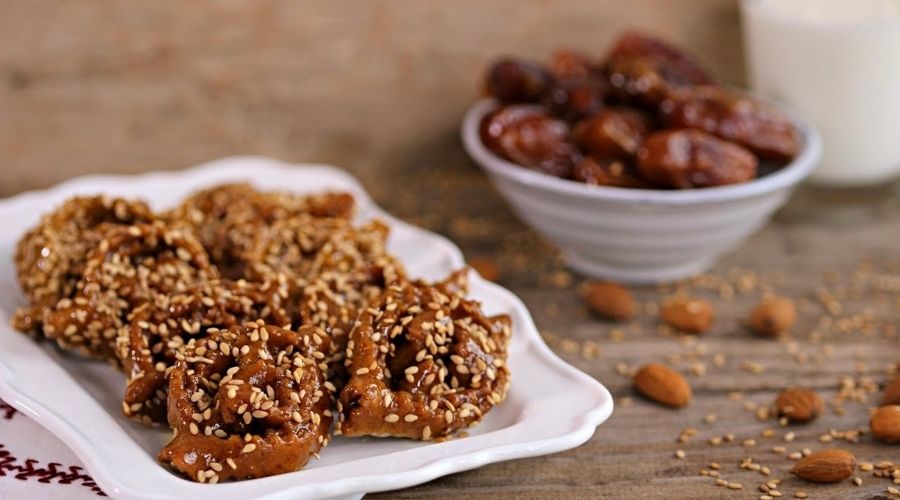
Moroccan dessert dishes are quite light. Chebakia is, with almond briouate, the flagship pastry of Ramadan. The dough, made with wheat flour, eggs, orange blossom water, anise, and almond, is fried in vegetable oil, then covered with honey and sesame seeds. It is also one of the cheapest and most common cakes in Morocco.
17- Mint Tea
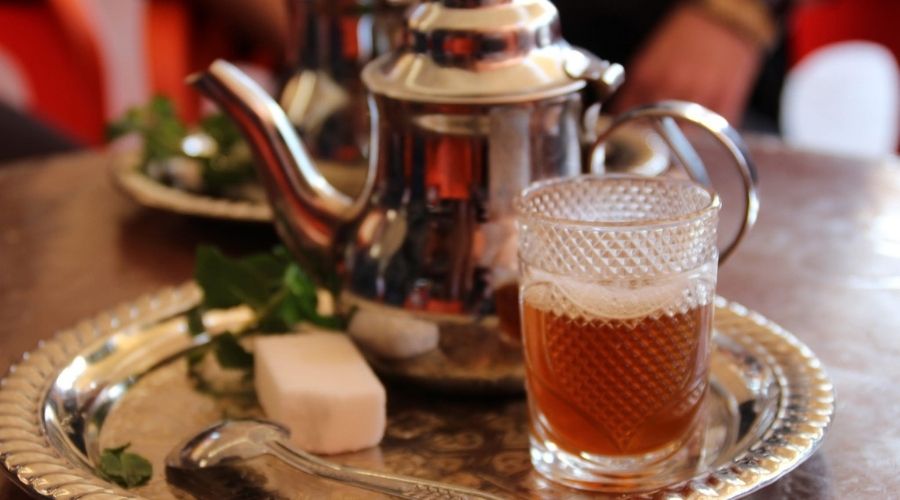
Atay or mint tea is the national drink for Moroccans, as it drinks all day at breakfast, after lunch and afternoon, and is served in cafes, events, and holidays. Moroccan tea accompanies many pies and sweets, and mint can be replaced with other herbs, such as Shiba.
18- Snail Soup
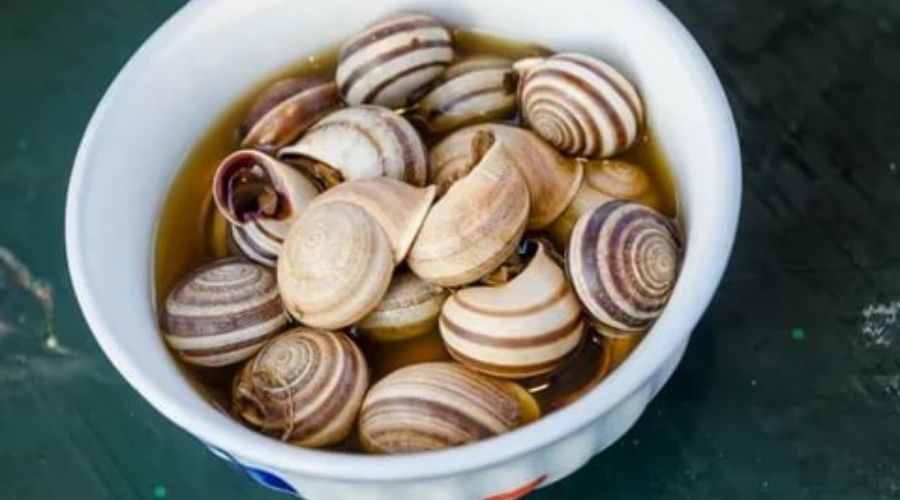
Snail soup is a Moroccan dish, you can find all over the country. Use a toothpick to pick out the snails from the shells, then slurp up to the soup. Locals believe the broth is good for digestion and fever.
19- Kebab And Kofta
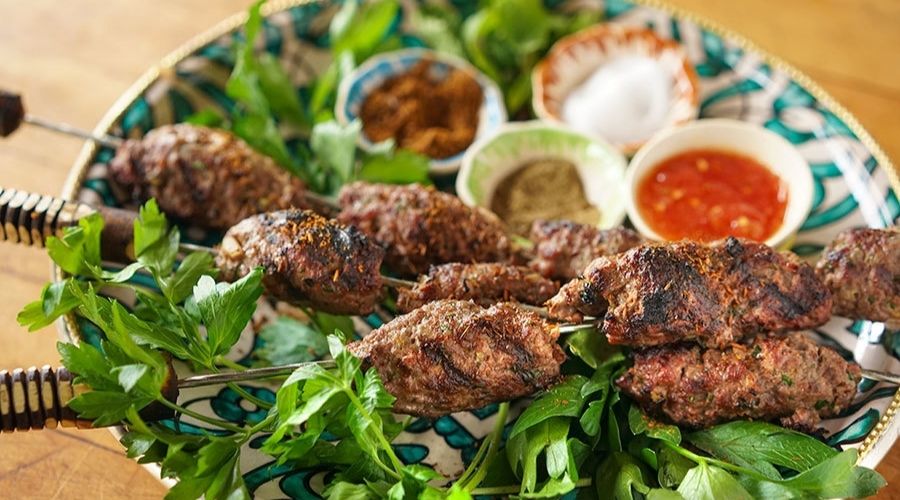
Flame-grilled chunks of lamb (kebab) and spiced minced meat made into a sausage and grilled on a skewer (kofta) are a favorite Moroccan food meal. It is typically eaten with a simple chopped tomato and cucumber salad and a disc of flatbread.
20- Sellou
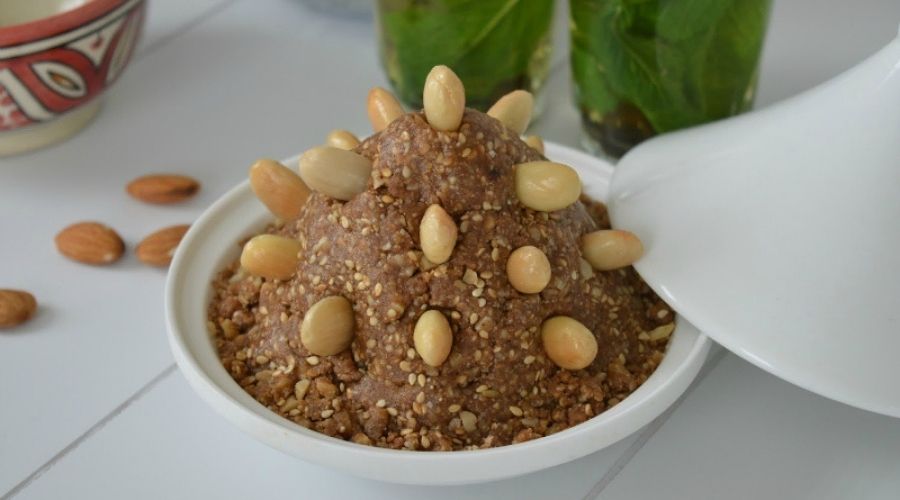
Sellou is a popular Moroccan sweet consisting of oven-browned flour, fried almonds, and toasted sesame seeds. The dessert is not baked, as all of the ingredients are combined instead. Rich and nutty, sellou acts as food that restores energy and health, which is the reason why it is traditionally served during Ramadan and at celebrations or special occasions.
21- The Orange
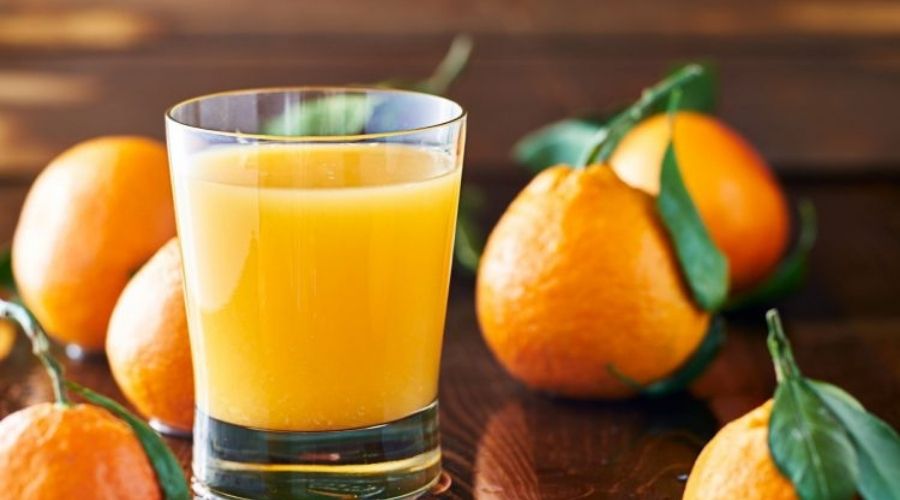
Orange is an essential part of Moroccan cuisine. It is served in all sauces, sweet or savory. It is also found in salads, served at the end of a meal. Oranges are mixed with sugar, cinnamon, orange blossom water, and a few mint leaves and make for a refreshing dessert after all the dishes we have just listed. Finally, the orange juices that can be found in the markets of Marrakech or on the Jema El Fnaa Square are absolutely delicious.
